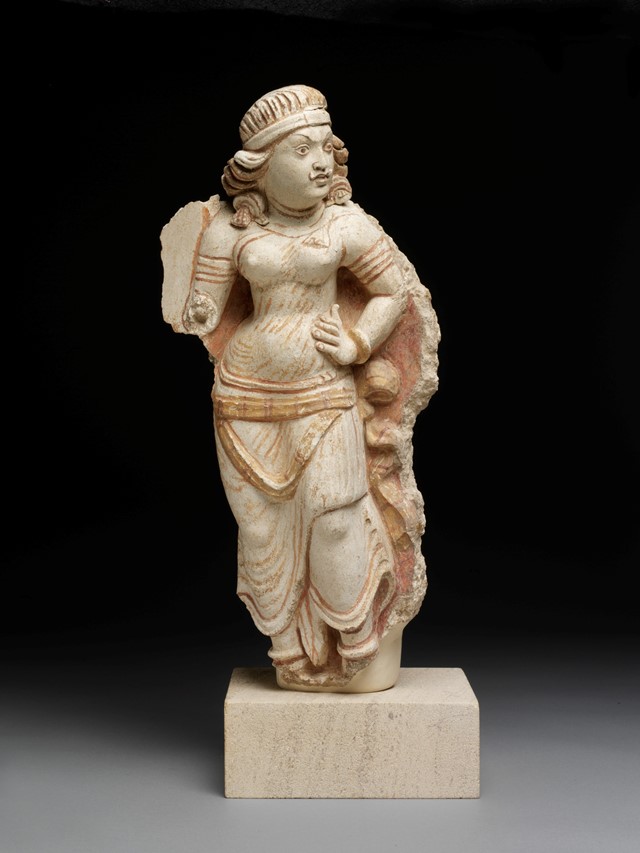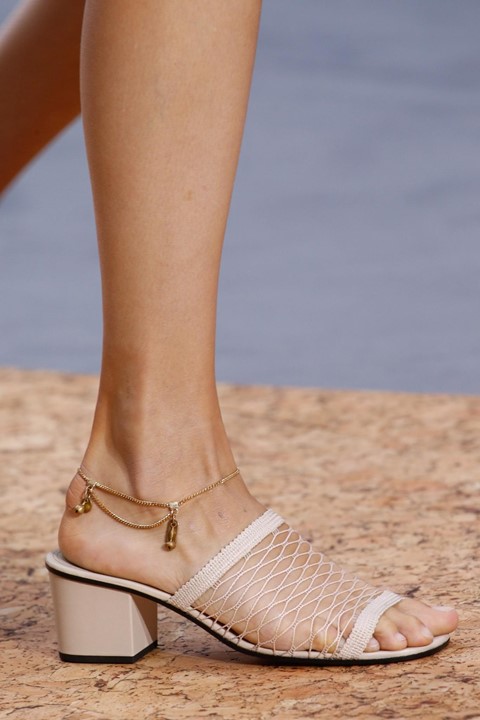Shonagh Marshall traces the visual evolution of the anklet, from ancient bijoux to modern-day adornment
The anklet, so delicate in form, can often be overlooked or obscured by another garment of clothing – thus its presence is often only known to its wearer. The Spring/Summer 2016 shows saw anklets in abundance: chunky at Calvin Klein, delicate and layered at Chloé, vampish at Marc Jacobs. The wearing of this object of embellishment can be found as early as Sumerian times, which are traced to the 5th millennium BC, and are considered the first ancient urban civilisation. In the book Making Europe: The Story of the West, Volume I it is stated that during this era "Women adorned themselves with bracelets, necklaces, anklets and rings for their fingers and ears." This doesn’t sound too dissimilar from the way in which modern maximalists adorn their fingers, ears, wrists and ankles today. Here, we pinpoint its style evolution in three short steps.

The Splendid Buddhist
This female attendant figure, which once formed part of the decoration of a Buddhist monument, is dressed in what the Victoria & Albert Museum describe as ‘diaphanous robes’, hand placed on hip, both ankles clad in anklets of simple bands. Dated between the 4th and 5th Century BC, it is from the ancient Greek or Hellenistic period, which covers the time between the death of Alexander the Great in 323 BC and the emergence of the Roman Empire in 31 BC. The jewellery worn during this era is representative of a demand in luxurious goods by an increasingly affluent society. This sculpture contains traces of the colourful paint that once adorned it, evoking fragmented notions of religious splendour.

The Provocative Payal
Anita Pallenberg stares longingly into the lens of the camera, a scarf covering her breasts. Her ankle, embellished with numerous stacked anklets, becomes the focal point; her trouser, tucked at her groin, reveals her naked tanned leg. During the mid-1960s there was an increasing fascination in eastern cultures in the west, with hordes of hippies embarking on the 'hippy trail': an adventure which begun in Europe and ended in South Asia, travelling through Pakistan, India, and Nepal. This led to a rise in fashionable clothing and accessories inspired by the regions; here, Anita Pallenberg (then, the girlfriend of Keith Richards from The Rolling Stones), wears a number of anklets inspired by India, where they are referred to as the payal.

The Delicate Heart
Isabella Blow glances at her image in a mirror. Her eyes veiled by a Philip Treacy hat, she wears a lace dress from Alexander McQueen’s A/W95 ‘Highland Rape’ collection. Her legs outstretched, around her right ankle hangs a fine silver anklet with charm. In the interview that accompanied this image, conducted by Daisy Garnett, the anklet is explained. "Blow does, literally, wear [her heart] – hanging off a little ankle bracelet. 'It's a broken heart,' she says, taking stock before adding quietly and with proper philosophical intent, 'People think that an ankle bracelet is something tacky, but in fact it is elegant because it draws attention to the ankle.' She then draws in her breath and whispers, as if it might be the answer to everything: 'It's very sexy, a delicate ankle. Don't you think?'"
